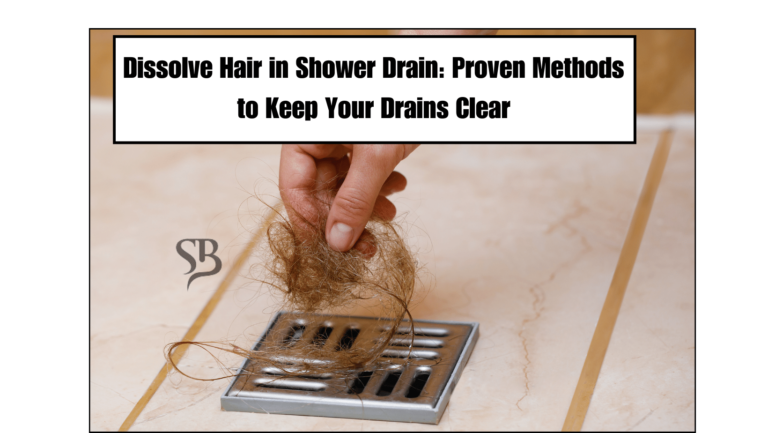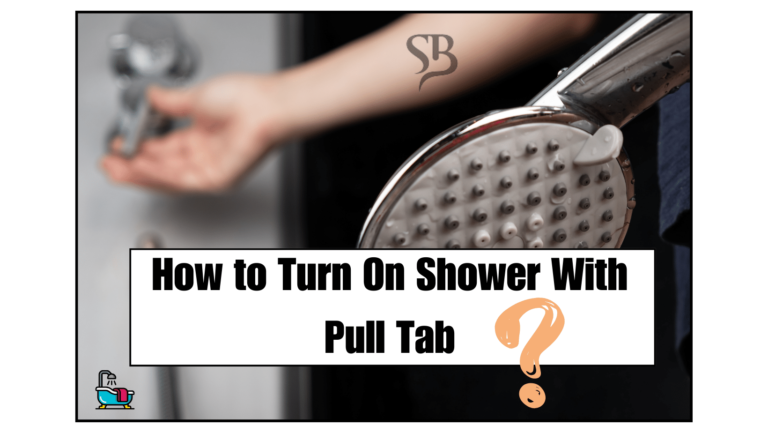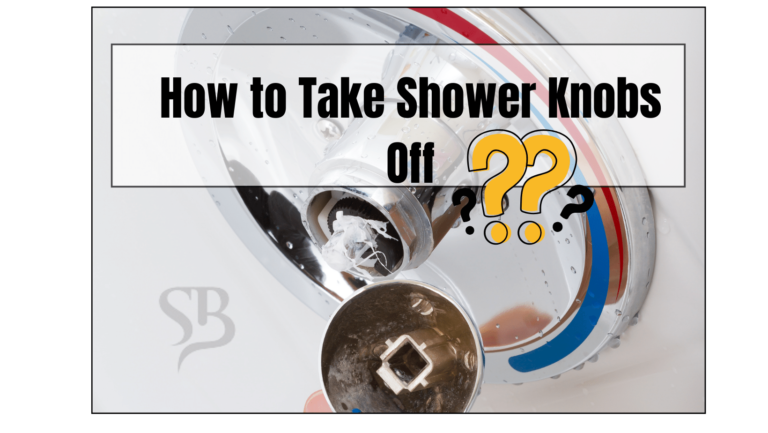Wedi shower systems have revolutionized the world of bathroom construction and remodeling with their innovative approach to waterproofing and durability.
Comprised of extruded polystyrene foam boards coated with a cementitious mortar on both sides, these systems create a reliable and long-lasting foundation for tiled showers. However, despite their many advantages, Wedi shower systems are not immune to certain challenges that can arise during installation or use.
Common Wedi shower systems problems include improper installation, which can lead to leaks and water damage if not done correctly, and difficulties in cutting and shaping Wedi board, which may require specialized tools and skills.
Additionally, some users may find Wedi shower systems to be relatively expensive compared to traditional construction materials.
To avoid problems, it’s crucial to follow Wedi’s installation guidelines precisely and, if uncertain, seek professional assistance. Proper installation and maintenance are essential to ensure the effectiveness and longevity of Wedi shower systems.
7 Common Wedi Shower Systems Problems
Here are some of the most common issues with Wedi shower systems:
Problem #1: Leakage and Water Seepage
Leakage and water seepage are among the most pressing concerns associated with any shower system, and Wedi showers are no exception.
When water finds its way into areas not designed to handle moisture, it can lead to structural damage, mold growth, and other serious issues.
Causes:
- Insufficient waterproofing during installation: Failing to apply proper waterproofing membranes and sealants can create pathways for water to infiltrate the walls and floors.
- Improper seams and joints sealing: If joints between Wedi panels or where the shower meets adjacent surfaces are inadequately sealed, water can penetrate and cause damage.
- Damaged or improperly installed drain assemblies: Defective or incorrectly installed drain components may lead to water pooling in the shower pan.
- Insufficiently sloped shower pan leading to standing water: An improperly sloped shower pan can cause water to accumulate and lead to leakage and water damage.
Solutions:
- Thoroughly follow the manufacturer’s guidelines for waterproofing and installation: Wedi provides specific instructions for applying their waterproofing system, including the use of Wedi Joint Sealant and Wedi Fundo Sealing Set.
- Use high-quality sealants for joints and seams: Invest in premium-grade sealants to ensure a watertight and long-lasting bond between Wedi panels and other surfaces.
- Verify that the drain assembly is correctly installed and functioning properly: Double-check that the drain components are installed according to the manufacturer’s instructions and are free of defects.
- Ensure the shower pan is appropriately sloped to allow water drainage: Employ a professional or use Wedi’s sloped shower bases to guarantee proper water flow towards the drain.

Problem #2: Clogging of Drainage System
A clogged drainage system can create significant inconveniences and may lead to water overflow or standing water within the shower area.
Causes:
- Accumulation of hair, soap scum, and debris in the drain: Over time, hair and debris can accumulate in the drain, causing blockages.
- Use of inadequate or improper drainage components: Using low-quality or incorrectly sized drain components can exacerbate the risk of clogs.
Solutions:
- Regularly clean the drain to remove hair and debris: Implement a routine maintenance schedule to clear the drain of accumulated hair and debris.
- Consider installing a hair trap to prevent clogs: A hair trap can effectively prevent hair from entering the drain, reducing the likelihood of clogs.
- Use high-quality, appropriately sized drain components suitable for Wedi shower systems: Invest in reliable and compatible drainage components that can handle the demands of your specific shower setup.
Problem #3: Efflorescence and Mineral Deposits
Efflorescence and mineral deposits can create unattractive stains on the surface of Wedi shower installations. These white, chalky deposits are caused by water evaporation, leaving behind minerals and salts.
Causes:
- Water evaporation from the shower surface: As water evaporates from the surface, minerals and salts can crystallize, leaving behind efflorescence.
- Use of hard water in the shower: Hard water contains a high concentration of minerals, which increases the likelihood of efflorescence.
Solutions:
- Regularly clean the shower surfaces to prevent mineral buildup: Implement a cleaning routine using mild, non-abrasive cleaners to remove mineral deposits promptly.
- Consider using water softeners to minimize mineral deposits: Installing a water softener can significantly reduce the mineral content in your water, minimizing the occurrence of efflorescence.
- Use a squeegee or towel to dry the shower surfaces after each use: Drying the surfaces after each shower can help prevent mineral deposits from forming.

Problem #4: Cracks in Wedi Panels
Cracks in Wedi panels can compromise the structural integrity of the shower enclosure, leading to potential water infiltration and further damage.
Causes:
- Inadequate support during installation: Failing to provide adequate support during panel installation can lead to stress cracks.
- Incorrect handling or transportation of Wedi panels: Mishandling or dropping panels can cause them to crack.
- Excessive load or impact on the panels: Heavy objects or impacts can result in cracks.
Solutions:
- Ensure proper support and reinforcement during panel installation: Follow Wedi’s installation guidelines to provide adequate support for the panels during installation.
- Handle and transport Wedi panels with care: Avoid dropping or mishandling the panels during transportation and installation.
- Avoid placing heavy objects on the panels and use proper load-bearing techniques: Prevent undue stress on the panels by avoiding heavy loads or impacts.
Problem #5: Discoloration and Fading
Discoloration and fading of Wedi shower systems can occur due to prolonged exposure to UV light, harsh cleaning chemicals, or continuous water contact.
Causes:
- Prolonged exposure to UV light from windows or skylights: UV rays can cause the colors of Wedi panels to fade over time.
- Use of abrasive or harsh cleaning agents: Certain cleaning agents can damage the surface and lead to discoloration.
- Excessive and continuous moisture on the panels: Continuous exposure to moisture can degrade the appearance of Wedi panels.
Solutions:
- Apply a suitable protective sealant to prevent UV damage: Use a sealant with UV protection to shield the panels from the harmful effects of sunlight.
- Use mild and non-abrasive cleaning agents: Stick to gentle, non-abrasive cleaning agents to preserve the panel’s appearance.
- Ensure adequate ventilation in the shower area to prevent excess moisture: Proper ventilation will help reduce moisture exposure and prevent discoloration.

Problem #6: Delamination of Tile Surface
Delamination refers to the separation of the tile surface from the Wedi panel, leading to loose or detached tiles.
Causes:
- Poor adhesive application during tile installation: Inadequate adhesive application can cause tiles to lose their grip on the Wedi surface.
- Inadequate preparation of the Wedi panel surface: Failing to prepare the Wedi panel surface properly can hinder the tile adhesion.
- Excessive moisture or water infiltration behind the tiles: Prolonged exposure to moisture can weaken the bond between the tiles and the Wedi panel.
Solutions:
- Follow proper tile installation procedures and use high-quality adhesives: Adhere to recommended tile installation guidelines and use reliable adhesives to ensure a strong bond.
- Ensure the Wedi panel surface is clean, dry, and free from contaminants before tiling: Properly clean and prepare the surface before tiling to enhance adhesion.
- Properly seal all tile joints to prevent water seepage: Apply a high-quality grout sealer to prevent water from seeping behind the tiles and compromising the bond.
Problem #7: Mold and Mildew Growth
Mold and mildew growth in Wedi shower systems can not only damage the structure but also pose health risks to occupants.
Causes:
- Excessive moisture and humidity in the shower area: Poor ventilation can lead to elevated humidity levels, fostering mold and mildew growth.
- Inadequate ventilation: Inadequate ventilation can trap moisture, creating an ideal environment for mold and mildew to thrive.
- Improper cleaning and maintenance: Neglecting regular cleaning and maintenance can allow mold and mildew to proliferate.
Solutions:
- Ensure proper ventilation in the bathroom and shower enclosure: Install an exhaust fan or open windows to promote airflow and reduce humidity.
- Use mold-resistant grout and sealants: Employ mold-resistant products to inhibit mold and mildew growth in the grout and joints.
- Regularly clean and maintain the shower surfaces to prevent mold and mildew buildup: Establish a cleaning routine to remove soap scum, mold, and mildew promptly.
Conclusion:
Wedi shower systems continue to be an attractive choice for builders, contractors, and homeowners due to their reliability and waterproofing capabilities.
However, understanding and addressing the potential problems associated with these systems are vital to ensure their long-term performance and durability.
By adhering to proper installation procedures, using high-quality materials, and implementing regular maintenance, the common problems of leakage, clogging, efflorescence, cracks, discoloration, delamination, and mold growth can be effectively prevented or resolved.
Remember that consulting with professionals and strictly following the manufacturer’s guidelines are crucial steps in mitigating these issues. With the appropriate measures in place, Wedi shower systems can continue to provide a comfortable and visually appealing shower experience for many years to come.







